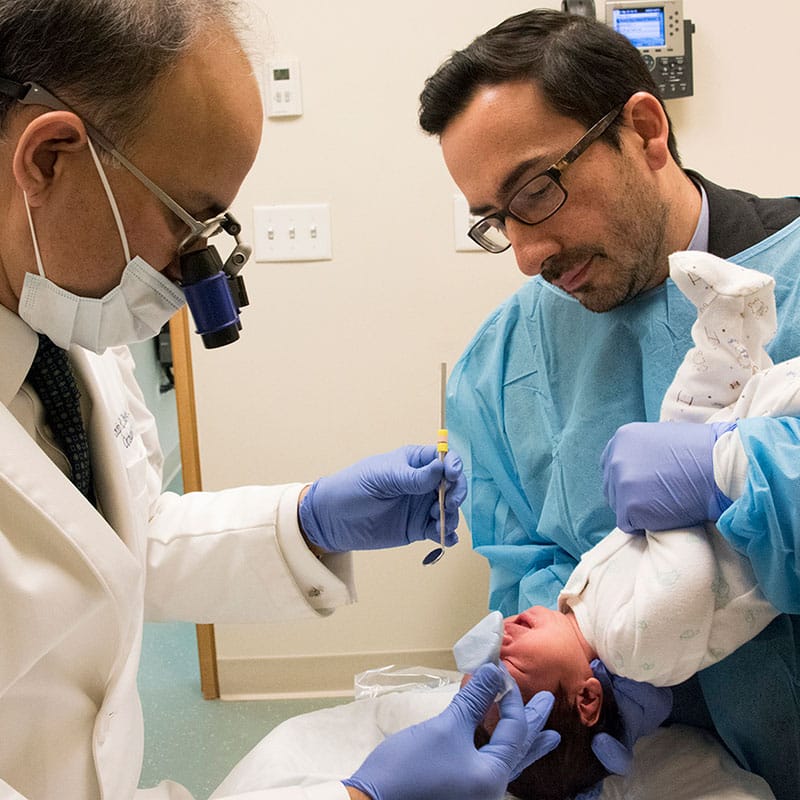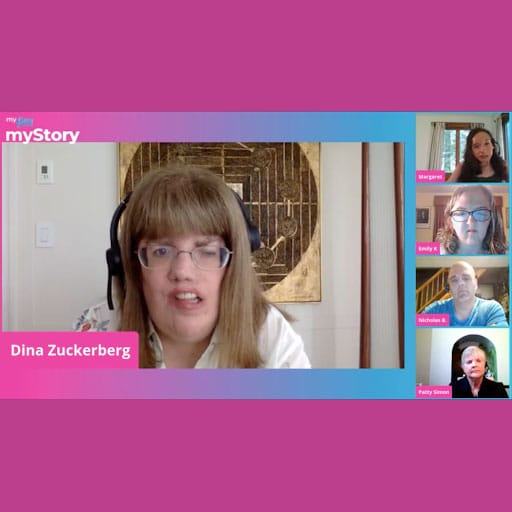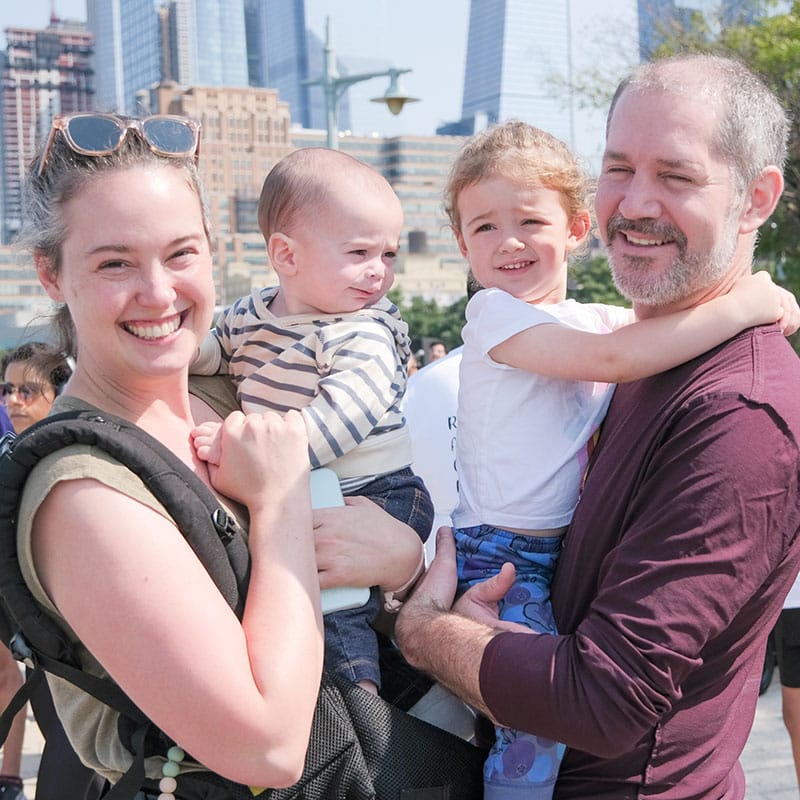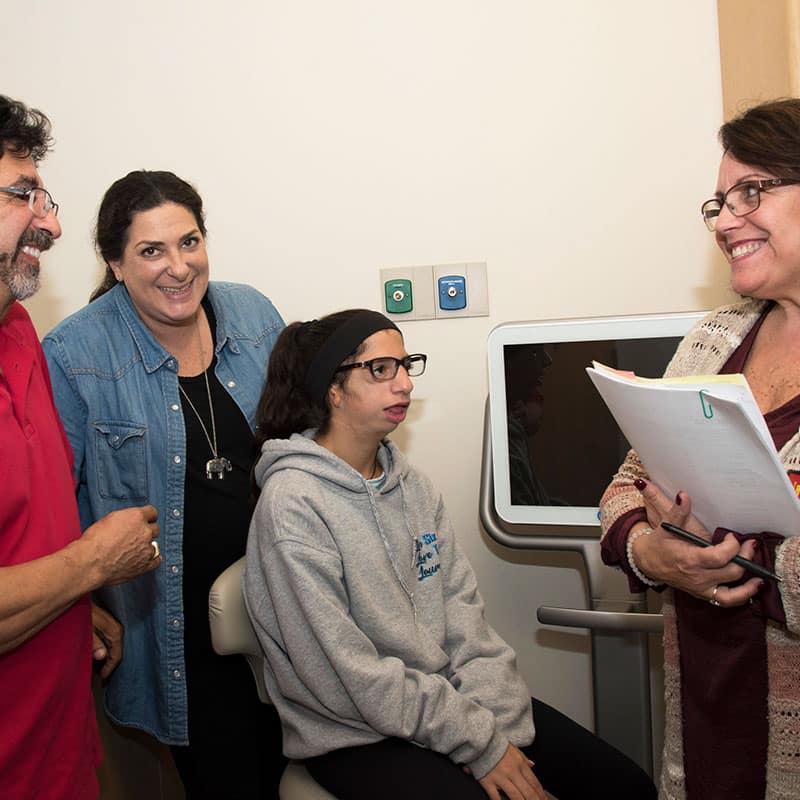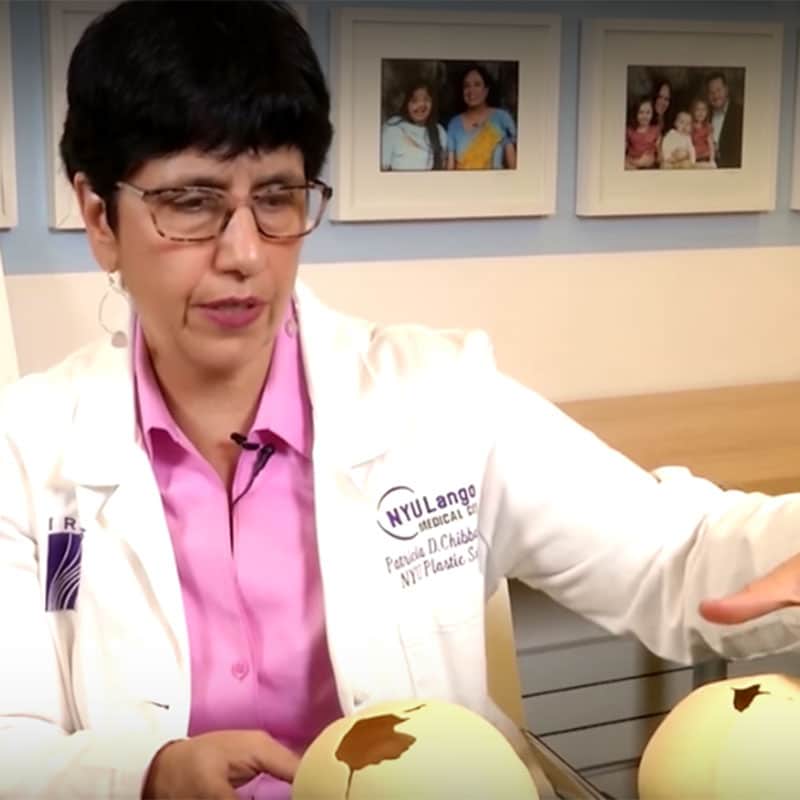Fronto-Orbital Advancement Procedure
Transformative Surgery for Craniosynostosis
The most common surgery used to treat craniosynostosis is called fronto-orbital advancement with cranial vault remodeling. This major craniofacial operation expands the space of the skull while improving facial appearance, particularly around the eyes.
What is Craniosynostosis?
The skulls of children affected by craniosynostosis grow abnormally and often misshapen. The problem lies in the cranial sutures of the bones of the skull. In normal children, these sutures remain open, giving the rapidly growing brain space to expand along with the skull, but in children with craniosynostosis, these joints close early. The brain does not have room to grow, which can result in brain compression and potential problems with brain function if left untreated. Therefore, surgery to expand the skull is recommended.
A common condition in candidates for this procedure is bicoronal craniosynostosis. Because the brow bone is pushed back, the eyes bulge, but the remainder of the forehead protrudes over the brow bone. The skull appears wide when looking at the infant straight on and narrow when looking towards its side. There are other forms of craniosynostosis, as well. Depending on the patient’s type of craniosynostosis, the skull and face may have a different shape.
Hear Peter’s FOA story from his parents:
How does a Fronto Orbital Advancement help?
After surgery, the brain has room to grow and once the swelling subsides, the facial appearance is improved. Although effective, cranial vault remodeling is a major operation which takes many hours to perform. A blood transfusion may be required and there can be a lot of facial swelling. A craniofacial surgeon and a pediatric neurosurgeon work together; they separate the forehead and a band of bone just above the eyes from the remaining skull.
Watch Nurse Practitioner, Pat Chibbaro, of the myFace Center for Craniofacial Care at NYU Langone Health explain a Frontal Orbital Advancement surgery:
The Process of a Fronto-Orbital Advancement Procedure
Pre-Surgery
Because a blood transfusion may be used during the operation, some families choose to donate blood for the operation before the surgery.
Fronto-Orbital Procedure
Once the patient is asleep, many monitoring devices will be placed to ensure safety throughout the operation. An opening is made on the top of the scalp from one side of the ear to the other. In most cases, the entire operation can be performed using only a scalp incision called a coronal incision. This opening may take the form of a wavy line to help hide the scar within the hair.
Surgical Steps in Fronto-Orbital Advancement: Transformative Procedures for Craniosynostosis Treatment:
- Forehead bone separation: The procedure begins by separating the forehead bone from the skull.
- Brow bone removal: A band of bone is then removed from the brow area, including the top of the eye sockets and parts of the temple.
- Reshaping of bones: The craniofacial surgeon molds the removed bones into a shape that provides a more natural contour to the face.
- Forward repositioning: After reshaping, the bones are returned to the skull in a forward position, creating more space for the brain and enhancing facial appearance.
- Securement with dissolvable materials: The reshaped bones are secured into place using dissolvable plates, screws, and sutures. Occasionally, metal may be used based on the surgeon’s decision.
- Scalp closure: Once the bones are secured, the scalp is closed.
- Drainage tube placement: A small drainage tube may be inserted under the scalp skin, exiting by the ear into a collection bulb for monitoring during recovery.
Post-Op & Recovery
After the surgery you will see a bandage around the head. Fluid may drain from the scalp incision. Most of this fluid will stop draining after a couple of days. The patient’s brow and forehead shape – and position – will have noticeably improved. These bones are commonly placed in a forward position that makes brow and forehead appear “strong” or slightly overcorrected. This is a normal part of the reconstructive plan to account for growth.
Swelling & Discomfort
It is important to note, this surgery does produce dramatic swelling around the eyes. It is usually not bad at first, but increases rapidly over two days. Commonly, the eyes swell shut over the course of those two days and then slowly resolve over several days. Most of the discomfort experienced after the surgery will be from the swelling of the face rather than the pain from the surgery itself and medicine will be given to help with any discomfort. Cool compresses to the face and sleeping with the face raised above the heart will also help decrease the swelling. Bruising around the eyes can also develop, but this will resolve over the course of approximately 2 weeks.
Meet Alonso, a member of the myFace community who had a Fronto Orbital Advancement
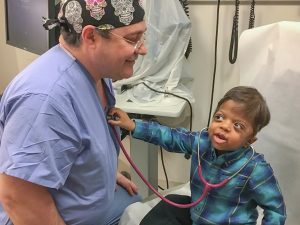 Alonso is the youngest of a loving, close knit family of 5 who came to the US from the Dominican Republic in 2015 when he was just a baby. Born with Crouzon Syndrome, he was later diagnosed with Craniosynostosis – two craniofacial conditions that resulted in the bones of his face and skull not forming properly.
Alonso is the youngest of a loving, close knit family of 5 who came to the US from the Dominican Republic in 2015 when he was just a baby. Born with Crouzon Syndrome, he was later diagnosed with Craniosynostosis – two craniofacial conditions that resulted in the bones of his face and skull not forming properly.


